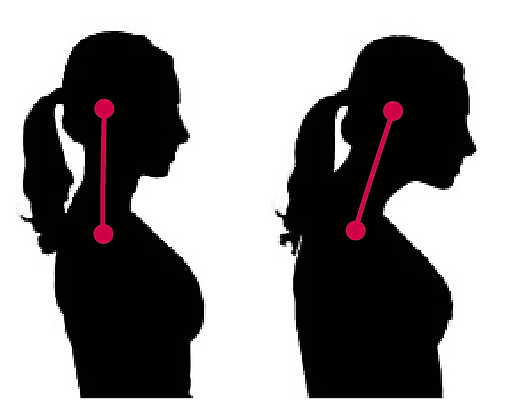- November 28, 2024
-
-
Loading

Loading

My partner in this month’s column is a fully qualified expert: John Sutherland, P.T. He is the lead therapist and owner of White Sands Therapy and Aquatics here in Sarasota. He is my go-to guy for neck and back pain. Given that my back has an abnormality of some sort at virtually every vertebra from C-2 through to S-2 (not an exaggeration), he is a valued medical ally as well.
Q: What is “chicken head” or forward head posture?
A: “Chicken head” is slang for the postural abnormality formally known as forward head posture (FHP). In anatomical terms, it is a forward tilt of the lower cervical spine (your neck) usually combined with an exaggeration of the normal posterior curvature of the mid to upper thoracic spine. In other words, it is carrying your head so that your ear holes are forward of your shoulder. Think “neck extended forward,” like a chicken.
My original personal trainer was constantly after me on this point 20-plus years ago: “Do you really think it helps if your head gets there before the rest of you?”
This poor posture is common, occurring in 66% of a sample of 26- to 50-year-old adults, according to a study by Patricia Grlegel-Morris, Keith Larson, Krlssann Mueller-Klaus and Carol Oatlsin (Physical Therapy, June 1992). The sample was divided into two groups, ages 20 to 35 and 36 to 50, because there was some thought that the problem might become more common or severe with age, although this study found no difference between these groups. One has to wonder about a still older group…
Q: What causes FHP?
A: The average adult human head weighs 11 to 12 pounds. Think of it as a bowling ball balanced on top of your neck between your shoulders. Your body is engineered to support that weight in a certain alignment of the spine that puts the ear holes directly over the shoulders. For every inch that your head is forward of that alignment, that bowling ball gets approximately 10 pounds heavier, forcing the muscles in your upper back and neck to work ever harder to keep the chin from dropping forward.
All kinds of activities can throw that perfect perpendicular alignment out of whack, starting with desk jobs. The computer is a special problem in this regard for the constant looking down of many, if not most setups. Dentists and dental hygienists spend their working hours leaning forward, as do jewelers and repair experts at their workbenches. Excessive reading is a risk. The newest twist is the “millennial posture,” resulting from all that texting and game-playing on tablets and phones. Standing over the stove or the sink amounts to hunching over as well. Even sleeping on more than one pillow can put your head into that forward tilt.
Q: How do I know if I have FHP?
A: You can sometimes get a decent look at your profile by looking into whatever mirror arrangement you use to comb the hair on the back of your head. For more dependability, have someone take a full length, side-view photograph. Then, it’s easy to see. Check yourself out if you experience any of the following symptoms.
Q: What does FHP cause?
A: This seemingly minor postural abnormality can cause all kinds of problems, the most common being pain in the neck or jaw from the stress on all the tissue and muscles. It can also result in numbness or pain in the upper extremities, specifically arm numbness or pain that extends all the way to the wrist or fingers. This is sometimes misdiagnosed as a rotator cuff issue, but that pain almost always stops above the elbow.
FHP can also cause stress or migraine headaches. It reduces the mobility of the head and neck, which is a big risk to safe driving, nowhere more so than on Longboat Key. It can impair respiration because it is bad for the breathing muscles, and it constricts the chest cavity. It can cause pain and numbness from bulging or herniated discs and even digestive problems. A particular concern for older adults is that FHP is bad for balance and can increase the risk of falling.
If you are experiencing any of these symptoms, consult your physician or see a physical therapist for an evaluation. You do not need a doctor’s order for that (even Medicare patients). The physical therapist will send the evaluation to your physician, who will determine any further treatment.
There are easy exercises you can do to help correct FHP and they will be the subject of a future column. We will also answer frequently asked questions, so email yours to [email protected].
The most important thing you can do about “chicken head” is to be constantly aware of your posture. Always check for the proper perpendicular of ear hole over shoulder. Call it vanity if you will, but a stooped posture communicates age and infirmity. A properly aligned one supports spinal health, comfort and range of motion; it communicates youth. All those times your mother told you to “stand up straight,” she was giving you good advice. Cluck, cluck.
Molly Schechter is an ACE-certified personal trainer with a specialty in older adult fitness plus YogaFit Instructor Training, SCF Yoga Fundamentals I and II and Power Pilates™ Mat Certifications. She teaches classes at the Bayfront Park Recreation Center. E-mail her at [email protected].